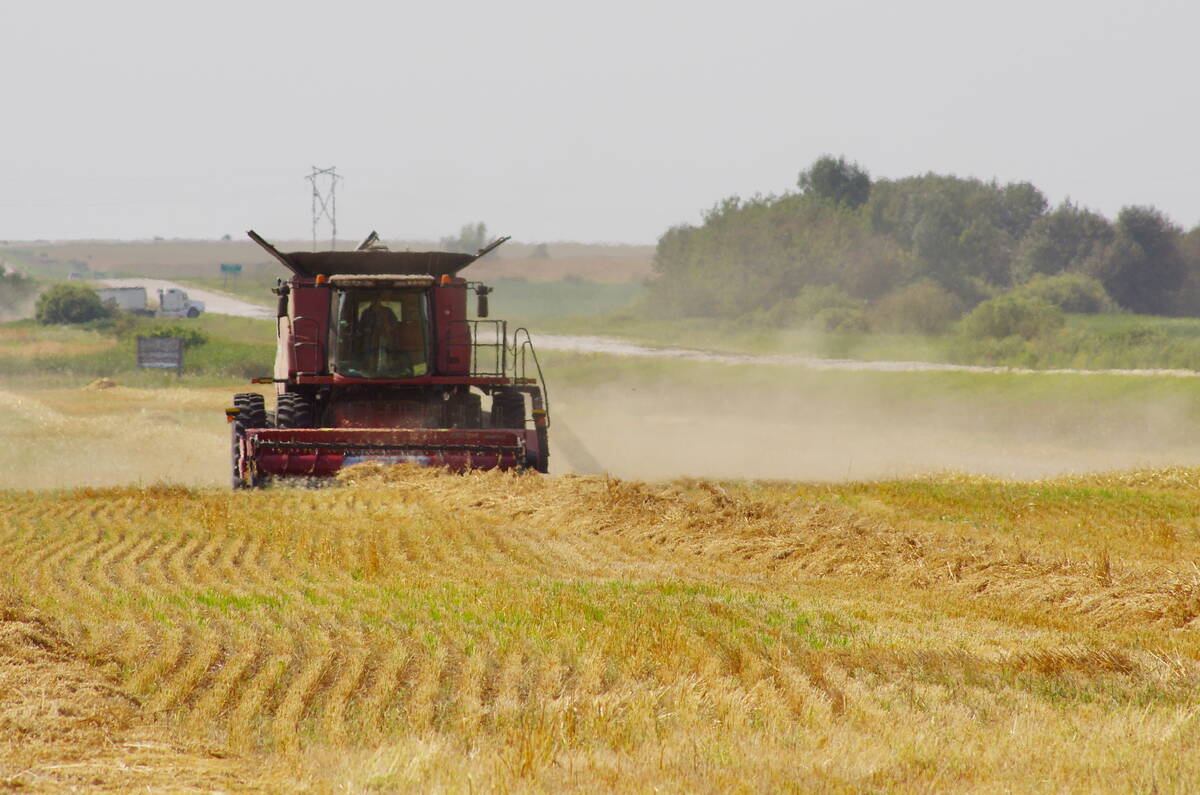Israel-based Equinom is using artificial intelligence to create ultra-high-protein yellow pea varieties that Canadian farmers will soon be able to grow.
Founder and CEO Gil Shalev said the company’s use of technology extends to being able to know early on just how much protein a plant will produce.
The varieties contain between 27 and 32 percent protein and have just finished their second year in Canadian co-op trials, while North Dakota growers are a little further ahead.
A partnership between Equinom and Regina’s AGT Foods and Ingredients announced last summer signalled that farmers on this side of the border will gain access to the varieties and the accompanying ingredient market. After milling, Equinom varieties have achieved 70 percent protein in the lab, compared to 55 percent in typical commercial concentrates.
Read Also

Herbicide resistance sprouts in Manitoba’s wild oats
Farmers across Manitoba this fall are gearing up for the latest salvo in what, for many, has become a longtime battle to beat out wild oats.
Shalev said the idea is to create food from the ground up. He started his company about 11 years ago with the vision of improving ingredients and therefore the resulting food product.
The proprietary technology is called Manna and it uses AI to analyze millions of seeds and predict the best breeding combinations for, in this case, protein.
“It starts from the food application,” he said in an interview from Israel. “Once we meet the food company … we are basically enabled to use the Manna system to translate the functional properties of the ingredients of an end application towards biochemical components, molecules. Why? Because to improve a seed you need to take those molecules and to discover the genomic regions of interest and then by cross breeding, not GMO or gene editing, to basically make new combinations of seeds that will enable us to combine the qualities and also the agronomic performance that we require to support our farmers in Canada and North Dakota.”
Better seeds leads to better grain for the end application, he said.
The technology is generic and although Equinom’s main efforts are directed to yellow peas the company is also working on soy, chickpeas, faba bean, mung bean and cow peas. The latter two don’t grow in Canada.
Shalev said protein is just one aspect the technology can identify. It can help breed for oil or improve a cereal crop but the whole idea is to improve the ingredients.
He said large seed corporations are not using technology like this in their breeding programs because they aren’t breeding for food.
“They are breeding for feed, for pigs, cows and chickens, which is most of the seed business,” he said.
Shalev said Equinom’s business model is not to sell grain but to work with partners. It’s complex, because it involves research and development, food application, functional testing of ingredient properties, biochemistry, bioinformatics, data analytics and breeding.
In the case of AGT, it will use dry fractionation to commercialize the ingredients from the new varieties.
The two companies share a vision of producing ingredients that are not heavily processed.
Equinom’s use of technology also extends to how crops are monitored. While many use satellites to watch crop conditions the company has been working on a process to use satellite images to calculate crop quality.
“We can do it very accurate,” he said. “We can project after a month or so what will be the yield and the protein within a specific region in Canada for peas.”
This risk management tool helps the partners meet specifications and commitments, since quality will not be the same in every field.
“Now it’s protein, but we are going to expand into other traits,” Shalev said.
Since Equinom began its yellow pea breeding program eight years ago all of the work has been done in Canada and the United States where the crop is grown and the agronomics and environmental conditions can be taken into account.
Once the varieties are available for commercial release, Shalev said growers will enjoy the same production as the current varieties but also the higher protein that the ingredient market demands.
Soy efforts are concentrated in the U.S. Midwest, he said, because Canadian varieties are early maturing. Chickpea and faba bean work is underway in Canada.
“We already have ultra protein varieties in chickpeas,” Shalev said, but faba bean is further behind.
He added the company is not at the point of working with lentils.
“One of the reasons we decided to focus on these crops is that in some of those crops, not all of them, there is already a processing facility, running, let’s say from big to a reasonable scale,” he said. “At the end of the day I cannot work on every crop because I have to make sure the economics is there for me to have enough ingredients to be sold into the market.”
Demand for seed production to ramp up and get the ultra-high protein peas into fields is immense. Shalev said the company is overbooked.
He added there are other companies working to improve yellow pea protein and he welcomes that. There is also activity in soy breeding, although not using the Equinom Manna technology, and he said the company can’t improve all the world’s food by itself.
“We believe that the success of Equinom is going to be heavily dependent on the success of our farmers and grain producers. The field is becoming our factory,” he said.


















